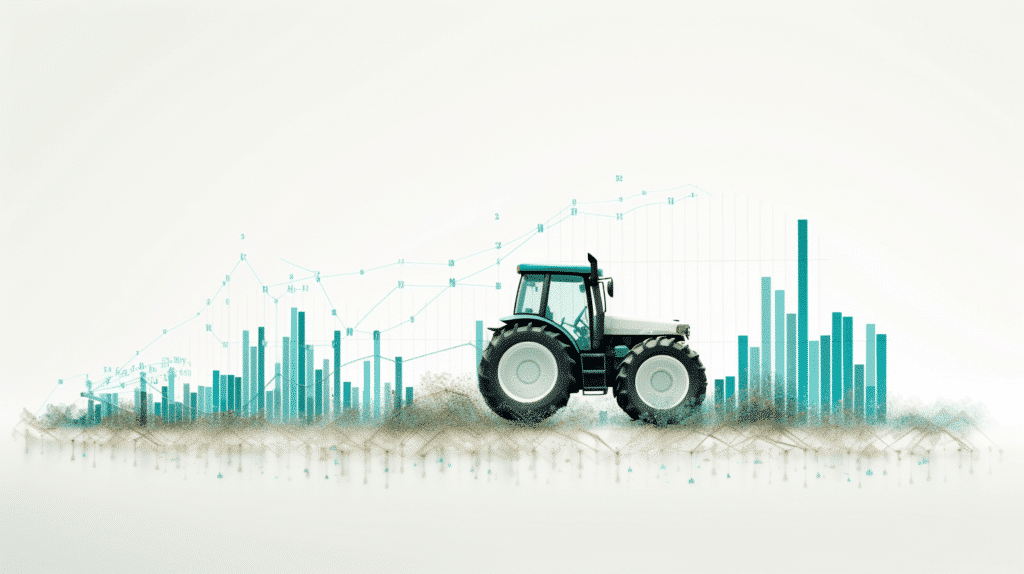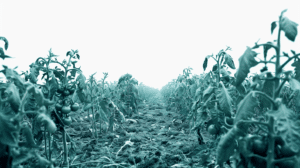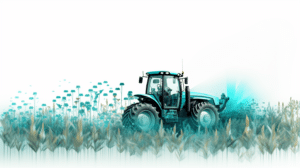Produce more, spend less, save the planet.
It’s not too late to change course. The last installment of the Intergovernmental panel on climate change’s (IPCC) sixth assessment cycle was released earlier this month. Once again stressing the need for immediate action to mitigate climate change in order to avoid dire consequences. While all sectors are required to make swift and radical transitions, it seems food and beverage have been tasked with a nearly impossible feat – sustainable intensification.
These two contradictory concepts – intensification and sustainability – come together to enable preserving and rewilding land to facilitate carbon sequestration. Land use change accounts for approximately half of the agri-food sector’s 21% share of global emissions. That means that before the first drop of fertilizer even touches the ground, agriculture is contributing to climate change just by turning carbon sponges such as forests, wetlands and peatlands into agricultural lands.
Intensification, in on itself, aims to liberate agriculture land by producing more yield per hectare. This is the crux of the last century’s green revolution – generously dispensing agrochemicals to enhance ground fertility and protect plants from pests and competition. With better inputs, better seeds, and scale machinery, yield-per-hectare skyrocketed, rising by 50%-200% compared to the 1960s (or even the 2000s). Unfortunately, GHG emissions have risen with it.
Sustainable farming practices attempt to reverse this trends by tackling the highest emitting factors in agriculture – those that enabled skyrocketing yields. Sustainable farming therefore risks lower yields per hectare to reduce emissions, which in turn creates the need for more hectares, and the loss of precious wild landscapes. Organic farming, for instance, demonstrates this trade-off well, compensating for production inefficiencies with a higher price tag. Was it grown using sustainable methods? Yes. Is it sustainable? Most definitely not.
Sustainable intensification is therefore a masterful balancing act, requiring improved seed and crop varieties, careful cultivation, and continuous data-driven decision making. Unlike organic farming, sustainable intensification can’t be achieved by following a set of pre-prescribed methods. It is crop, region, weather, season, and even hectare specific, and must take into account a massive amount of dynamic variables to optimally cultivate every scrap of land. In an ideal world, every farm would have its own agronomist, feeding on a flow of weather, imaging, lab analysis and sensor data to optimize production. In reality, most farms lack this benefit, and resort to indiscriminate use of inputs to ensure they reach their yields quotas, at whatever cost. Imagine, however, if it was possible to scale agronomic advisory to individually prescribe sustainable intensification measures to fit the specific conditions and requirements of each grower throughout the season. The knowledge already exists – developed and preserved by agronomists in business and academia.
What is needed is a means to distribute this knowledge in a clear, actionable manner, relying on algorithms to digest agronomic data and advise on the best course of action for specific crop varieties and conditions. This is not artificial intelligence, but a different form of AI – Agronomic Intelligence – intended to enable optimized decision making at the leadership level and automated advisory at the field execution level. It involves applying appropriate agronomic protocols in accordance with data on soil composition, weather conditions and threats to plant health, enabling growers to minimize their use of inputs while maintaining their yield output. Combining precision agriculture with sustainable farming methods also allows to enhance soil health and build organic soil fertility to reduce the need for harmful interventions over time.
Sustainable intensification has tangible benefits for buyers and manufacturers as well. Enhancing production capacity enables buyers to source from less fragmented players, and reduces the need to buy from the commodity markets. It enables more accountability for quality and safety, and reduces the risk of product recalls or non-compliance with various export regulations. It also enhances companies’ ability to maintain operational continuity in volatile conditions by promoting climate resilience in raw material production – thus reducing the risk of shortages and disruptions. Accordingly, these downstream players have a critical rule to play in promoting sustainable intensification.
Today, major players such as Nestle, Unilever, Pepsico and more are engaging in sustainable farming initiatives, and have presented their suppliers with strict demands regarding production methods and standards. This is an important step, but it can go even further. Sustainable intensification can help shape better, and more dynamic procurement strategies and direct effective sustainability initiatives and efforts.
The emissions-yield ratio of different commodities differs from region to region, making some areas more appropriate for the production of certain crops or seed varieties. Optimizing procurement can help eliminate inefficiencies in production from the demand side, lowering the risk of supply disruption and improving companies’ overall scope 3 carbon emissions.
Doing so requires having a holistic view of the entire supply array, including granular data on yields, resource use, and regional climate risks. This type of aggregated agronomic intelligence can drive better decision making at both the supply and the demand side, cutting down on inefficiencies, reducing costs, and – most importantly – helping to save the planet.
Learn more about agronomic intelligence








